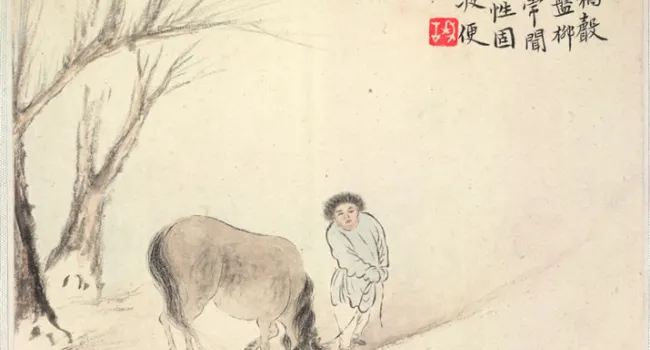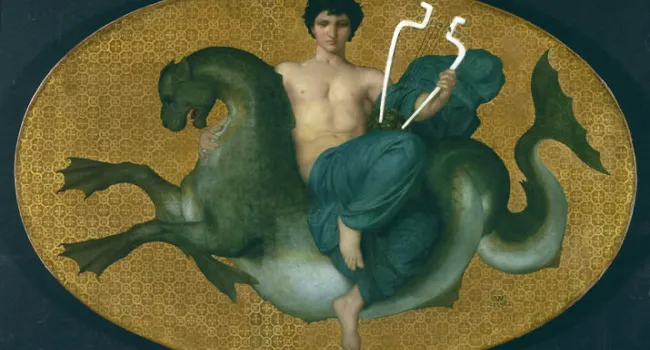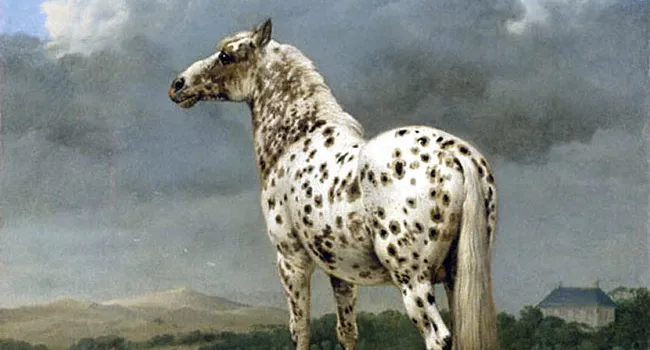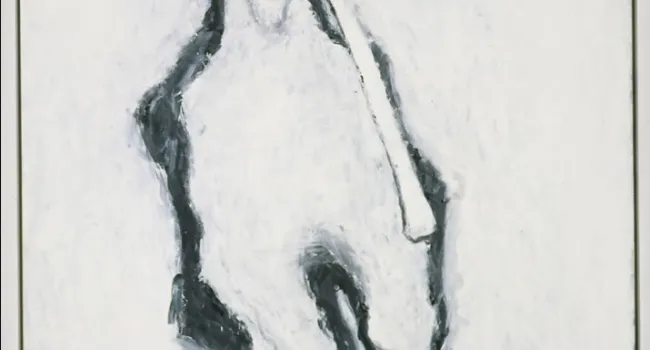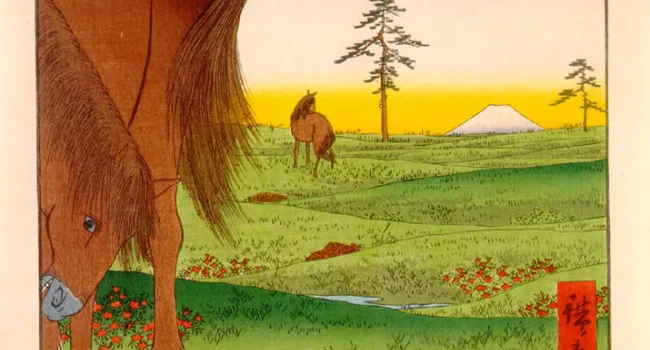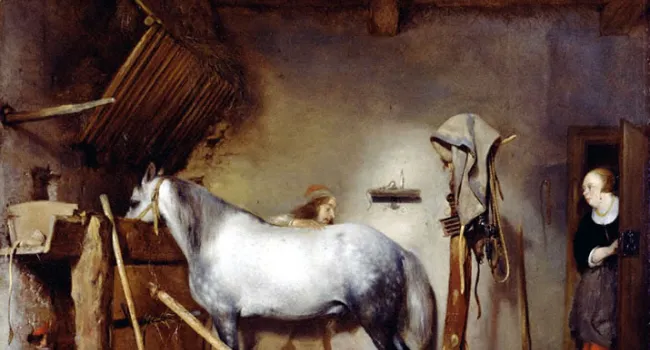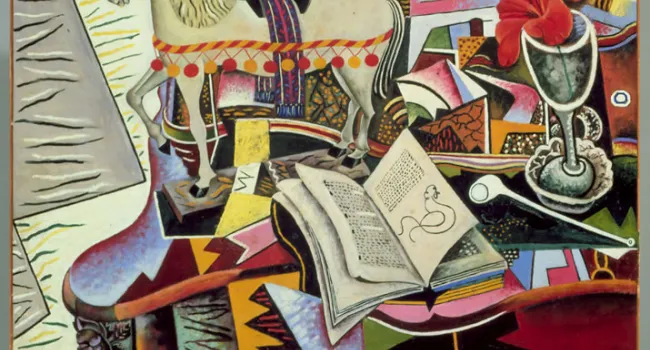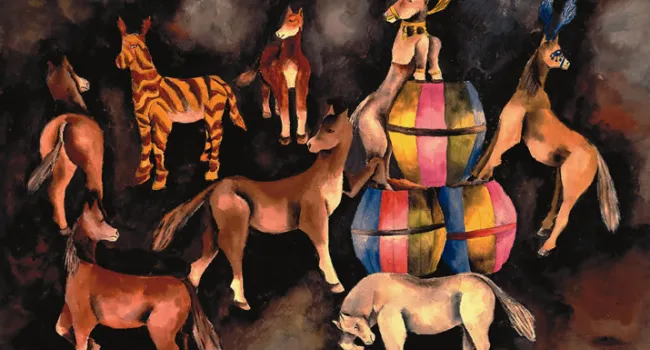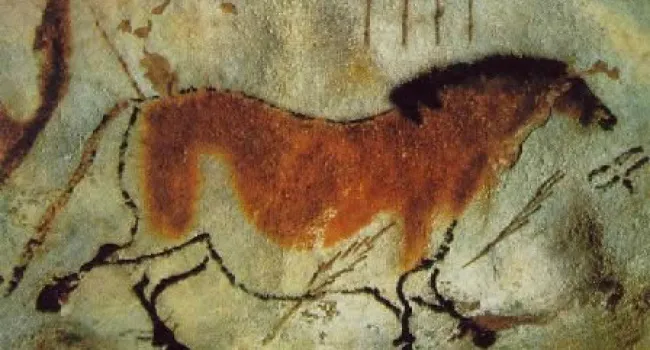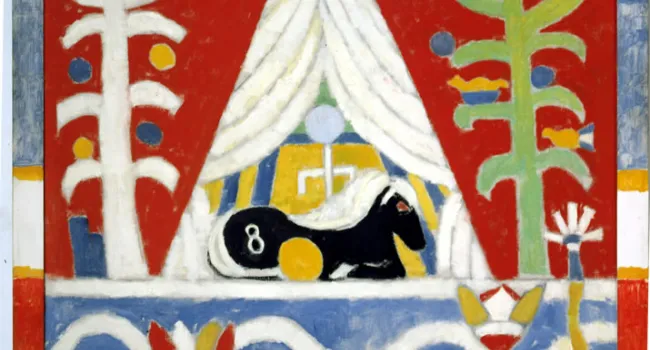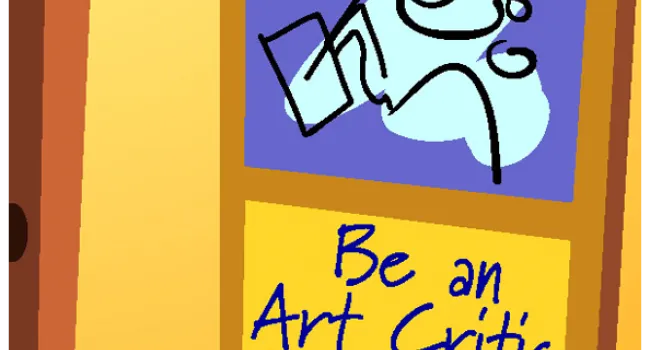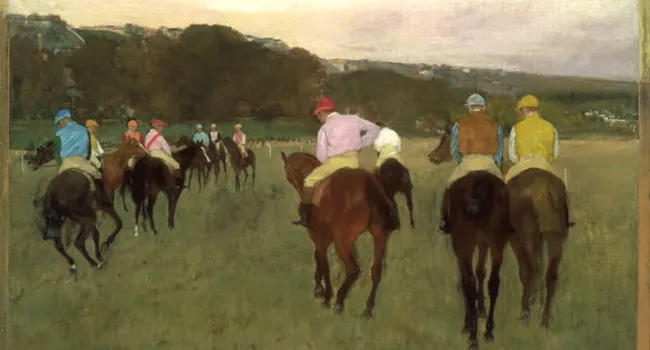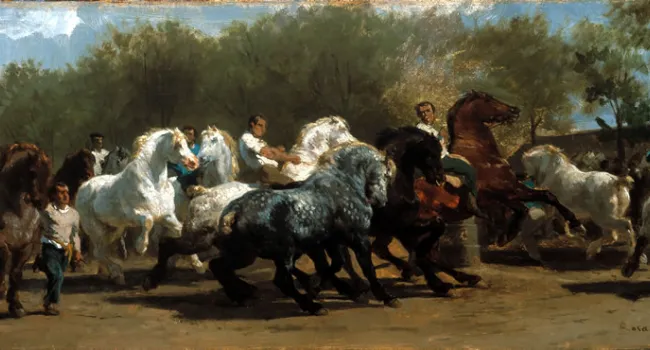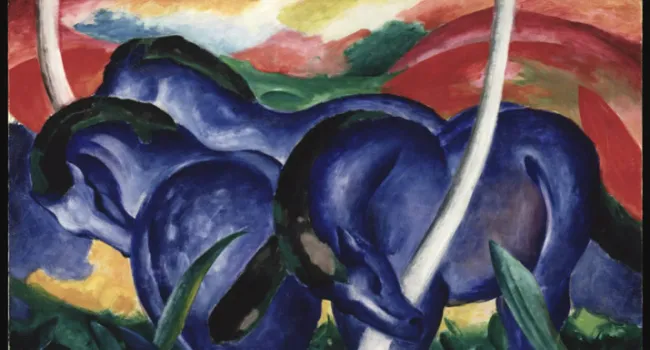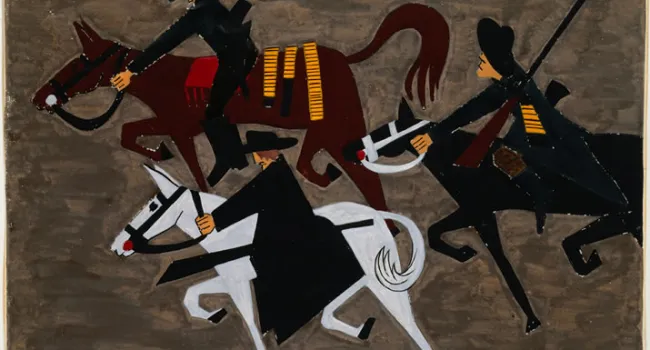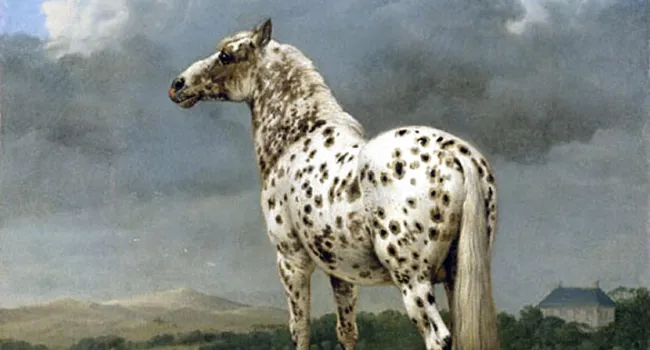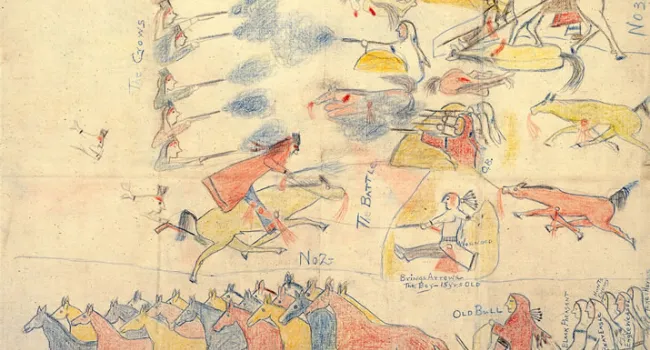These are examples of narrative artworks that depict historical figures and events. No. 11 - John Brown Takes to Guerilla Warfare, is one of a series of twenty-two gouache paintings illustrating the life and times of abolitionist John Brown, who fought to put an end to slavery. Winter Horse Raiding Episode depicts three scenes of a horse raiding expedition against members of another tribe. Drawn in colored pencil on one canvas, it is part of the Native American Plains Indian tradition of retelling and preserving stories pictorially. Each artist portrays aspects of his people’s struggle: Old Bull shows a treasured but disappearing way of life, while Jacob Lawrence tells of the effort to end an unjust one.
It is interesting to note that the shape of the horses in the two paintings is nearly identical, almost as though the same artist had created them. This is most evident in the horses’ heads and legs. The subjects of each artist’s work are drawn as outlines without much detail or realism.
The color palette is similar as well. Jacob Lawrence and Old Bull use warm colors with black and brown hues and the colors are flat with little variation in their value. There is, however, a difference in the thickness or opacity of the color. Lawrence achieves a more thorough cover with his use of gouache, an opaque watercolor paint. Old Bull applies his medium lightly. You can even see the canvas through the colored pencil.
The movement differs in these two artworks. In John Brown the horses are racing to the left and all the movement goes in that direction. Winter Horse Raiding Episode begins in much the same way as John Brown with the horses moving from right to left. But then our eyes are drawn upward to the right facing horses and the gun men who are firing to the right. We follow the smoke of their riffles and move to the upper right of the picture. From there our eye move down the right side of the painting until we're back where we started.
